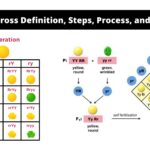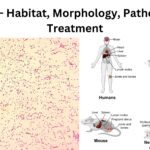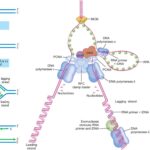AQA GCSE Biology 187 Views 1 Answers
Sourav PanLv 9November 12, 2024
How is glucose converted into starch, glycogen, and cellulose in metabolism?
How is glucose converted into starch, glycogen, and cellulose in metabolism?
Please login to save the post
Please login to submit an answer.
Sourav PanLv 9May 15, 2025
Glucose is converted into starch, glycogen, and cellulose through distinct metabolic pathways that involve specific enzymes and regulatory mechanisms. Here’s an overview of how these conversions occur:
1. Conversion of Glucose to Starch
- Starting Point: The process begins with glucose, which is derived from photosynthesis in plants.
- Key Enzymes:
- ADP-Glucose Pyrophosphorylase (AGPase): This enzyme catalyzes the conversion of glucose-1-phosphate and ATP to ADP-glucose and inorganic pyrophosphate (PPi), initiating starch synthesis.
- Starch Synthase (SS): This enzyme elongates the glucose chains using ADP-glucose as a glucosyl donor. It adds glucose units to the non-reducing ends of the growing starch polymer.
- Starch Branching Enzyme (SBE): This enzyme introduces branches into the starch molecule by transferring segments of the glucose chain to create α(1→6) linkages, resulting in a branched structure composed of amylopectin and amylose.
- Final Structure: Starch is primarily composed of amylopectin (branched) and amylose (unbranched), both made up of α-glucose subunits linked by α(1→4) and α(1→6) glycosidic bonds .
2. Conversion of Glucose to Glycogen
- Starting Point: Glycogen synthesis occurs primarily in liver and muscle cells when there is an excess of glucose.
- Key Enzymes:
- Glycogenin: This initiates glycogen synthesis by forming short chains of glucose that serve as a primer for further elongation.
- Glycogen Synthase: This enzyme adds UDP-glucose to the growing glycogen chain, forming α(1→4) glycosidic bonds. It is responsible for the majority of glycogen synthesis.
- Branching Enzyme: Similar to starch synthesis, this enzyme creates branches in glycogen by forming α(1→6) linkages after every 10 glucose units.
- Final Structure: Glycogen is a highly branched polymer of α-glucose, allowing for rapid mobilization during energy demands.
3. Conversion of Glucose to Cellulose
- Starting Point: Cellulose synthesis occurs in plant cells, primarily in the cell wall formation.
- Key Enzymes:
- Cellulose Synthase: This enzyme catalyzes the polymerization of β-glucose units into long chains linked by β(1→4) glycosidic bonds. Unlike starch and glycogen, cellulose consists of β-glucose subunits, which results in a linear and rigid structure.
- Final Structure: Cellulose forms long, straight chains that can hydrogen bond with adjacent chains, creating strong fibers that provide structural support to plant cell walls
0
0 likes
- Share on Facebook
- Share on Twitter
- Share on LinkedIn
0 found this helpful out of 0 votes
Helpful: 0%
Helpful: 0%
Was this page helpful?




